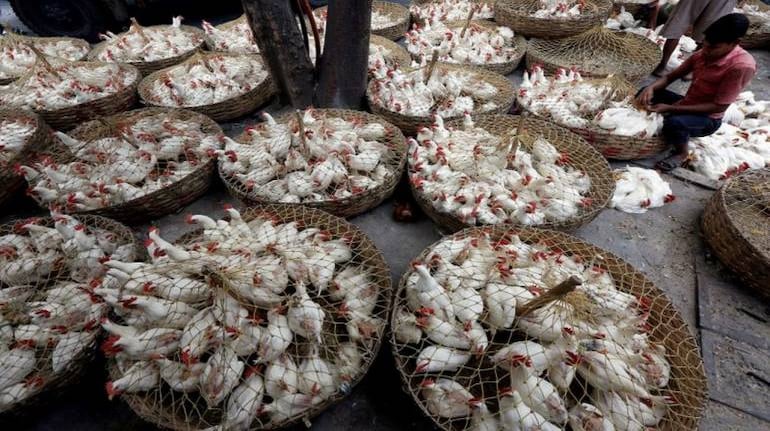



When Coronavirus battered trade and economy in the country, the poultry industry did not suffer much. In fact, consumption of chicken and egg witnessed a rise.
Robust demand kept the industry running despite trade disruptions, lockdowns, closure of restaurants and a steep rise in production cost. All these had led to a spike in the retail prices of chicken.
With doctors recommending sufficient intake of proteins during the time of pandemic, people consumed more poultry meat and eggs. Even before the outbreak of COVID-19, poultry has been one of the fastest-growing segments of the agricultural sector in the country.
According to Agricultural and Processed Food Products Export Development Authority (APEDA), while the production of agricultural crops has been rising at 1.5-2 percent per annum, that of eggs and broilers has been rising at a rate of 8-10 percent. As a result, India is now the world's fifth-largest egg producer and the 18th largest producer of broilers.
"The year 2021 saw a good demand for poultry. As shops remained closed, people spent more on food. This year, growth has moderated a bit as people have other options, with the opening up of the economy," said G B Sundararajan, MD of Suguna Foods, a major player in the poultry segment.
Rising incomes, growing middle class helping factors
The poultry sector’s growth in India is being driven by rising incomes and a rapidly expanding middle class, together with the emergence of vertically integrated poultry producers that have reduced consumer prices, by lowering production and marketing costs.
Poultry comprises about 60 percent of the meat consumed in the country. As per the Economic Survey, the poultry meat production in the country touched 3.6 million tonnes while egg production reached 114 billion in 2020.
"After the outbreak of the pandemic, doctors started prescribing high protein intake and non-vegetarians across the country went for chicken as red meat is not considered healthy and costs more. Consumption has increased 25-30 percent, when you consider all forms of chicken," said C R Selvakumar, DGM, Venkiteshwara Hatcheries.
Last year, chicken prices rose due to an increase in the poultry feed cost. Apart from primary ingredients, like maize and soybean, the minerals and enzymes that are added in the feed also became costly, Selvakumar said.
Prices rise, but consumption unaffected
"The retail prices of poultry meat doubled to Rs 250 per kg and that of live chicken went up from Rs 90 to Rs 160 per kg. As a result, the quantity of meat bought has come down," he pointed out.
But traders are happy that they are able to sell more chicken in a year. Apart from the low sales periods, like Lent and Ramadan seasons, the trade is usually affected when chicken prices soar. "Last year, we sold for 190 days, despite the increase in retail prices. We saw a 20 percent spike in consumption in the state," said S K Nazeer, secretary of All Kerala Poultry Federation.
Costly feed has also raised the cost of production of eggs. "It went up from Rs 3.7-3.9 to Rs 4.2-4.5 per egg. But consumption soared by 20 percent. Since farmers have not reduced the stock and the entire production cost increase has not been passed on to consumers, their margins have taken a severe hit," said Sasikumar, director of Ravi Poultry Farms.
Livestock farmers were expecting feed prices to come down this year but it has not dropped to the extent they expected. Namakkal in Tamil Nadu is the hub of egg production in the country.
But the Russia-Ukraine conflict has opened up export opportunities to the Gulf countries for egg farmers in the country. "After the start of the fight, the supply of eggs to the Gulf countries from Turkey and Ukraine has slowed down. India is able to export around 3.5 crore eggs a month to Dubai," said P V Senthil, secretary of Livestock and Agri Farmers Trade Association.
Since margins are low with high production cost, Senthil wants the government to restore the subsidy available to egg farmers as the current export boom is benefitting only a few rich farmers. "The government removed the subsidy a couple of years ago and our exports suffered heavily. From 3 crore eggs a month, the export to Oman dropped to 50 lakh," Senthil said.
A string of bird flu at several places also hit egg exports hard. But several West Asian countries had allowed exports after that.
Discover the latest Business News, Sensex, and Nifty updates. Obtain Personal Finance insights, tax queries, and expert opinions on Moneycontrol or download the Moneycontrol App to stay updated!
Find the best of Al News in one place, specially curated for you every weekend.
Stay on top of the latest tech trends and biggest startup news.